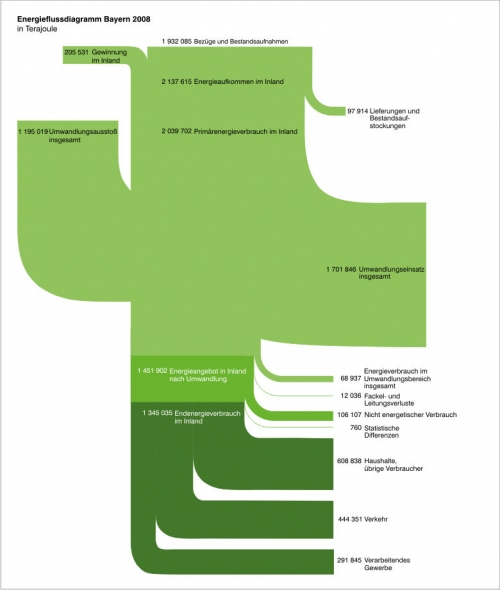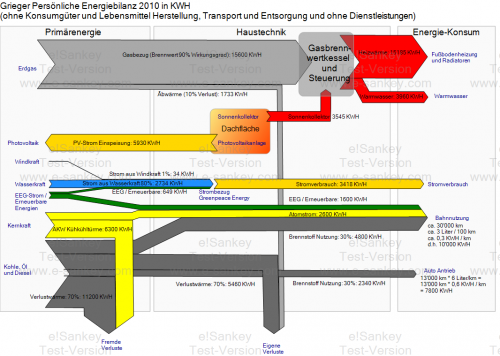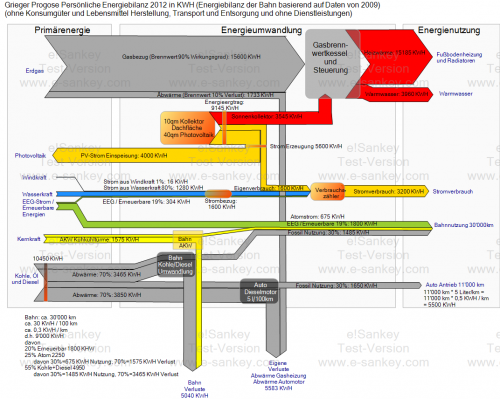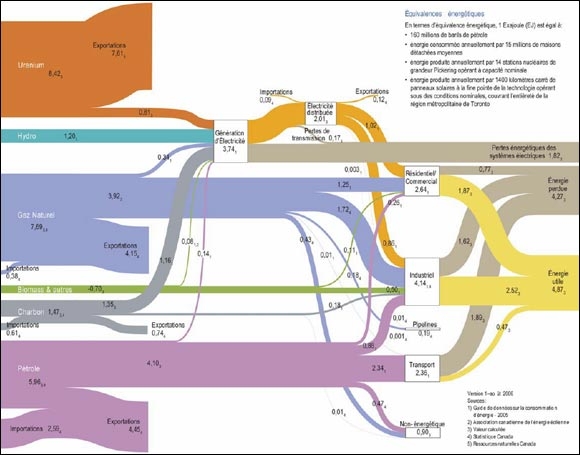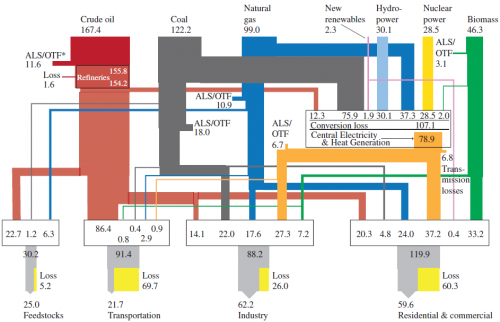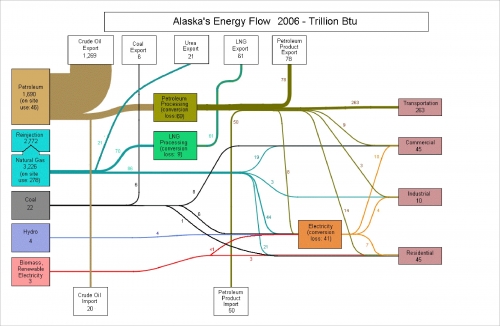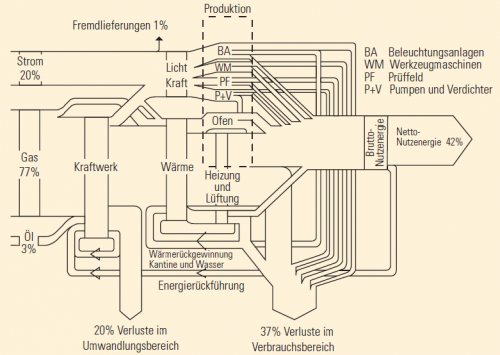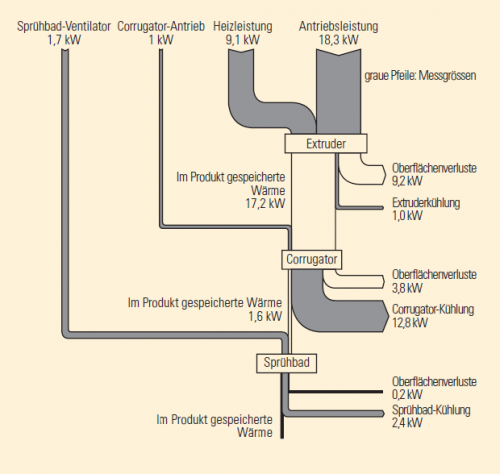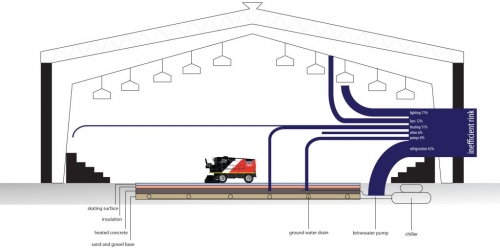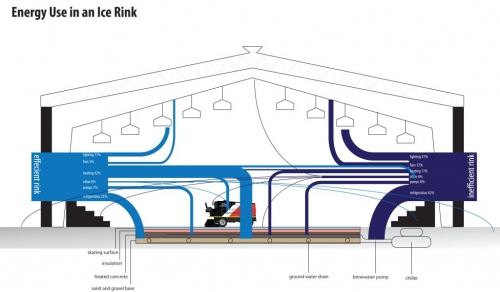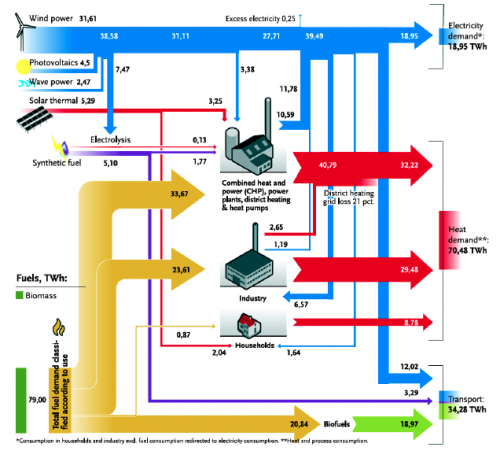Found this Energy Flow Diagram for Bavaria (Germany) on the Bavarian Ministry of Economy website.
Flows are in Terajoule (TJ). Flows from top to bottom with different consuming sectors like private houdholds, traffic and industry. Different shades of green… 😉
While I generally welcome the fact that these Sankey diagrams are published for nations, regions or states (as is the case here / more examples can be found here on the blog!), I find that care must be taken to respect the basic principles used for these diagrams.
In that respect the above example looks somewhat quirky to me. The reason for this diagram being spoiled is the fat stream (1.195.019 TJ “Umwandlungsverluste insgesamt” – not sure what that means though) merging into the vertical band from the left, and its counterpart (1.701.846 TJ “Umwandlungseinsatz insgesamt”) branching out to the right at more or less the same height. Are these additional inputs and outputs? But then, why do they cross the main direction of the flow? Not clear to me…
Not a good example. I would have expected better from the state where two of my favourite cars are manufactured.
